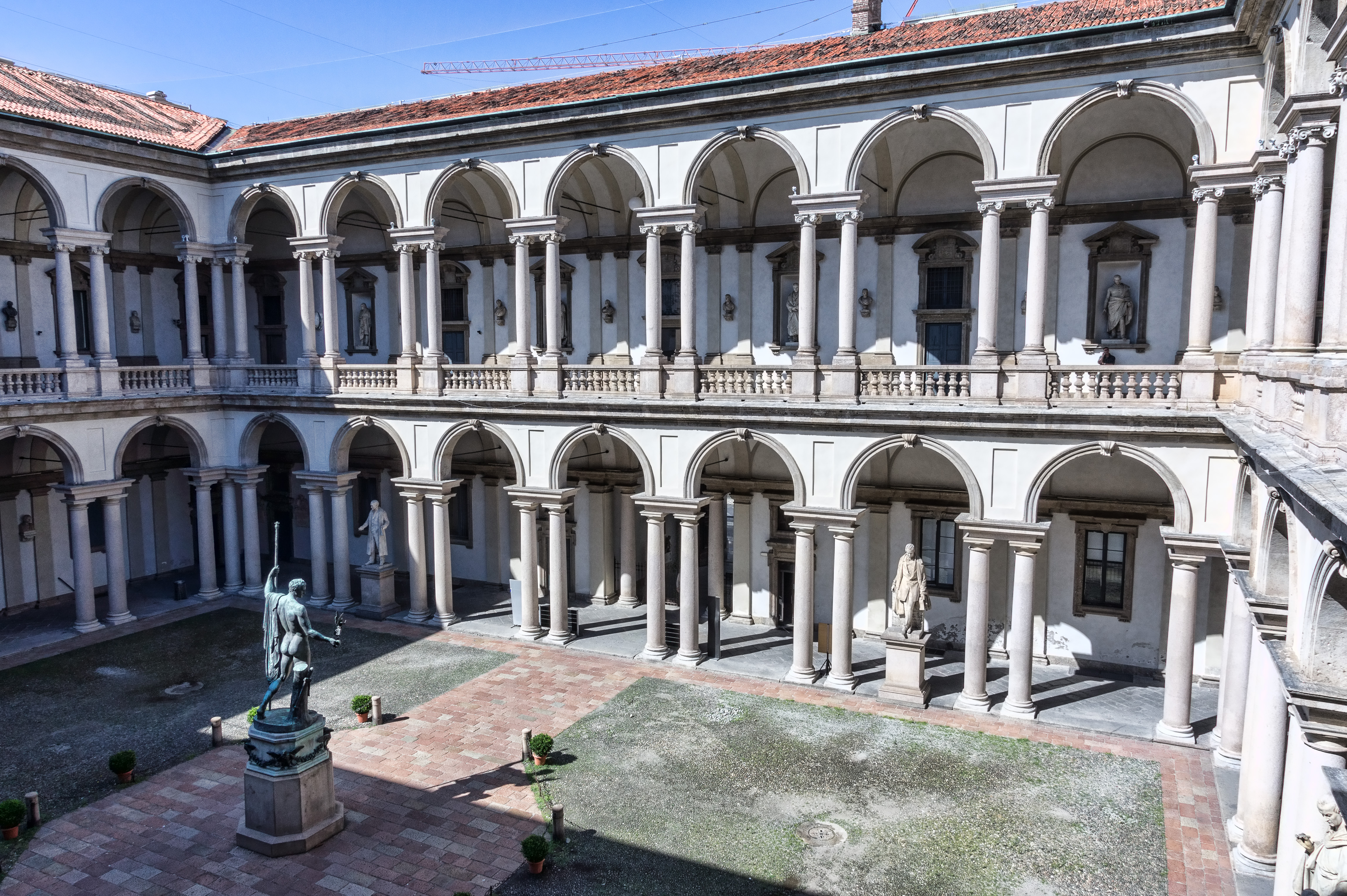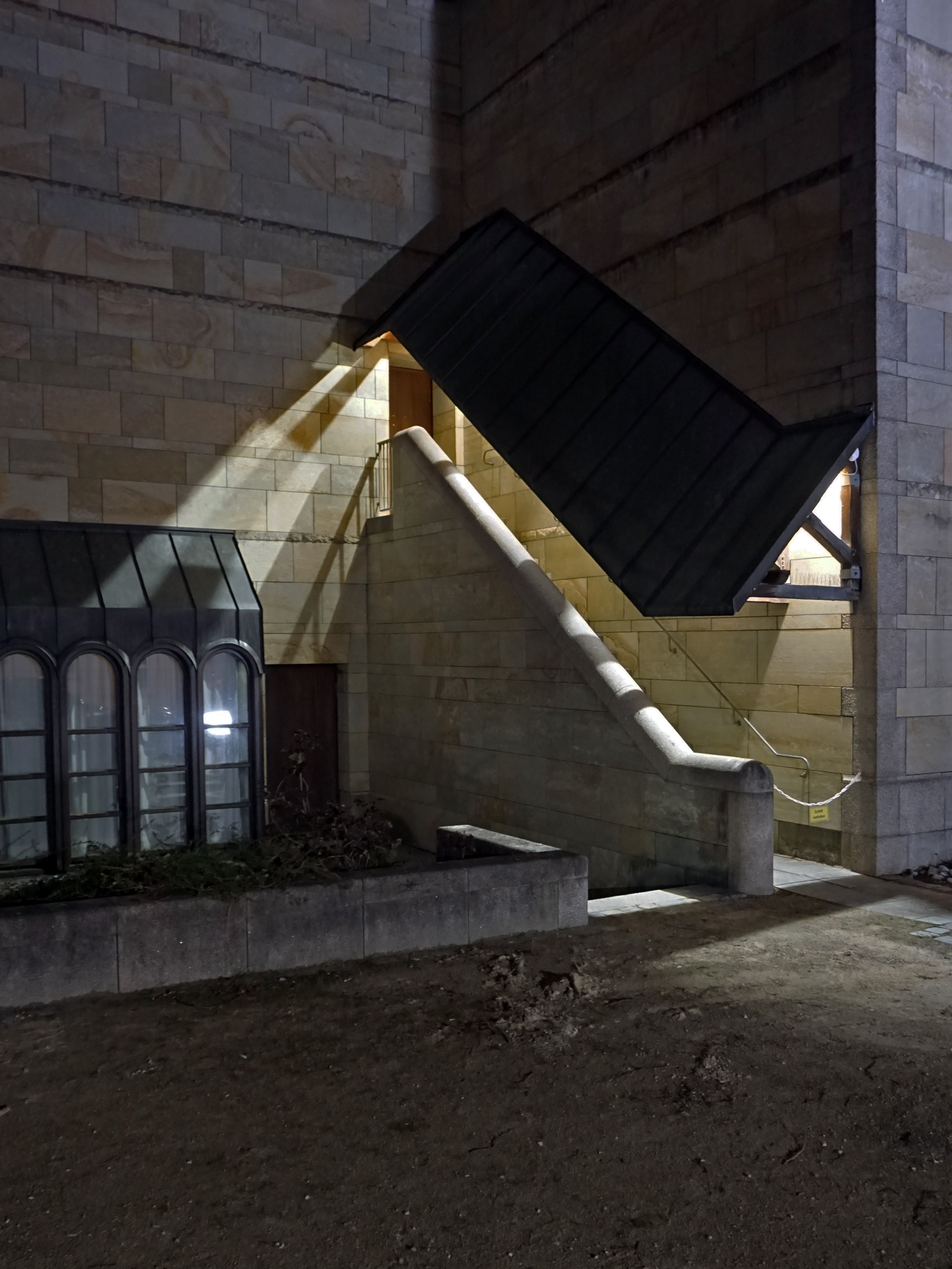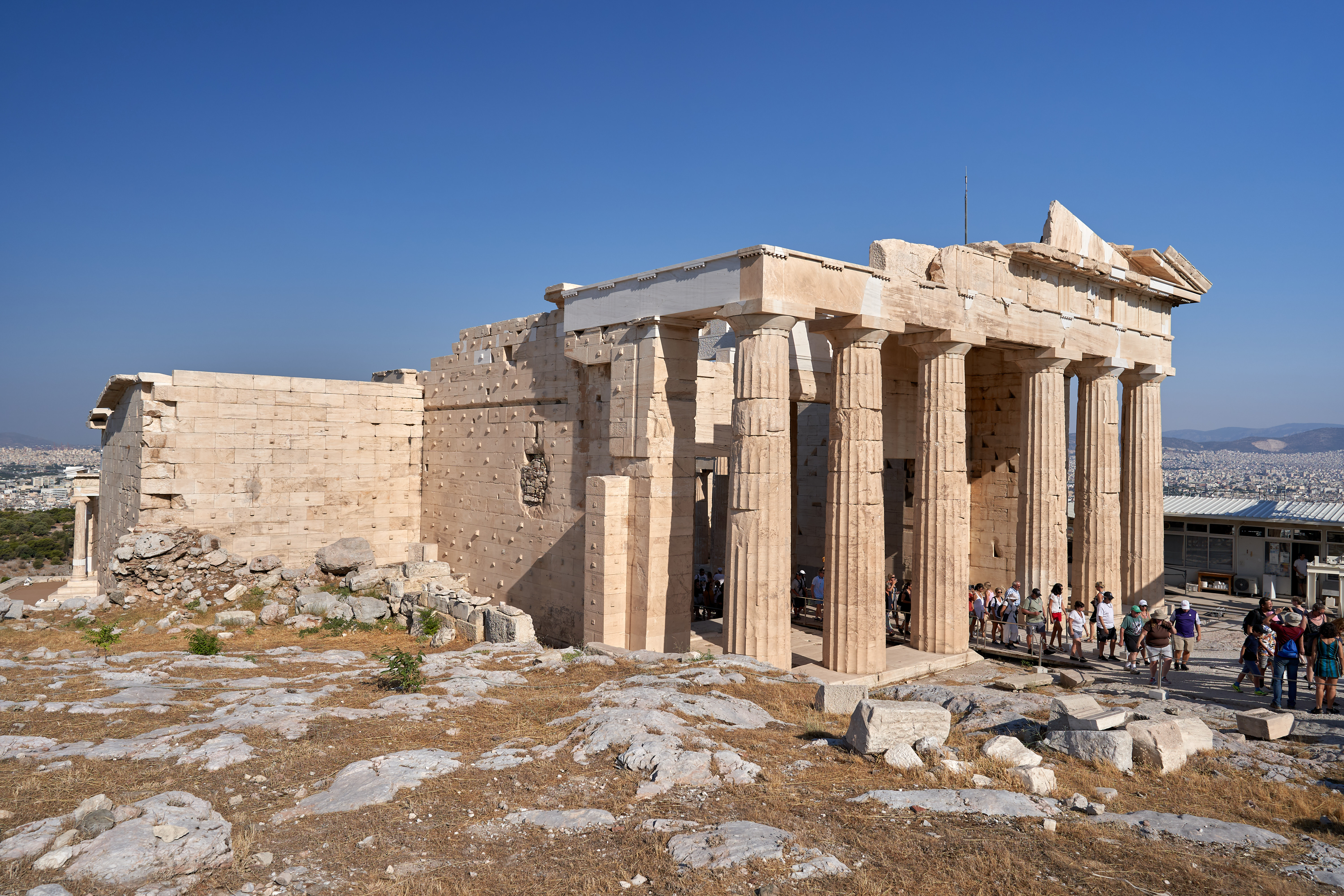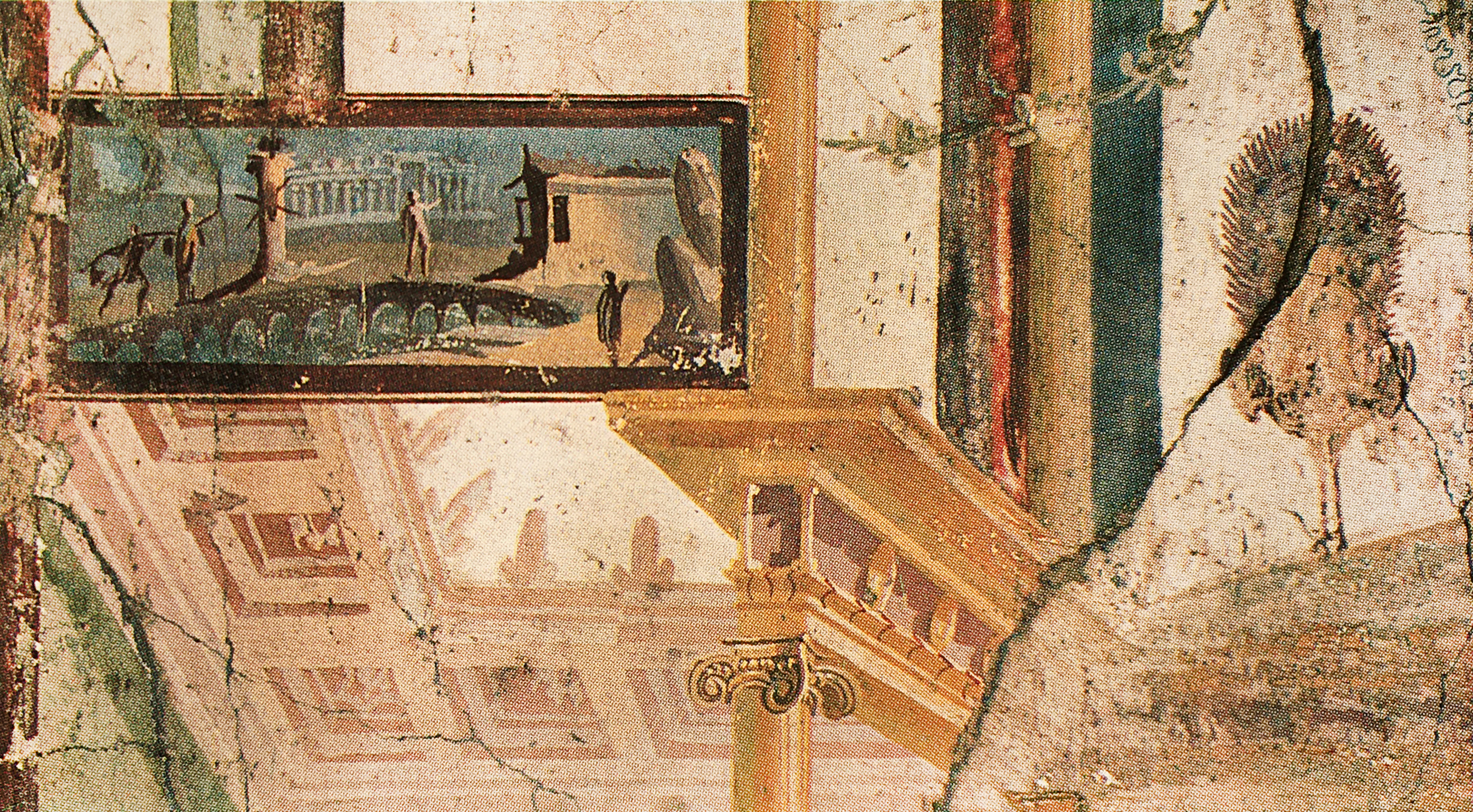|
Pinakothek
A pinacotheca (Latin borrowing from grc, πινακοθήκη, pinakothēkē = grc, πίναξ, pinax, (painted) board, tablet, label=none + grc, θήκη, thēkē, box, chest, label=none) was a picture gallery in either ancient Greece or ancient Rome. The name is specifically used for the building containing pictures which formed the left wing of the Propylaea on the Acropolis at Athens, Greece. The Pinacotheca was located next to the temple of Athena Nike. Though Pausanias speaks of the pictures "which time had not effaced",Pausanias, ''Description of Greece''book I, chapter xxii, page 31, section 6 translated by J. G. Frazer (1898) which seems to point to fresco painting, the fact that there is no trace of preparation for stucco on the walls implies that the paintings were easel pictures. The Romans adopted the term for the room in a private house containing pictures, statues, and other works of art. In the modern world the word is often used as a name for a public art g ... [...More Info...] [...Related Items...] OR: [Wikipedia] [Google] [Baidu] |
Alte Pinakothek
The Alte Pinakothek (, ''Old Pinakothek'') is an art museum located in the Kunstareal area in Munich, Germany. It is one of the oldest galleries in the world and houses a significant collection of Old Master paintings. The name Alte (Old) Pinakothek refers to the time period covered by the collection—from the fourteenth to the eighteenth century. The Neue Pinakothek, re-built in 1981, covers nineteenth-century art, and Pinakothek der Moderne, opened in 2002, exhibits modern art. All three galleries are part of the Bavarian State Painting Collections, an organization of the Free state of Bavaria. The building King Ludwig I of Bavaria ordered Leo von Klenze to erect a new building for the gallery for the Wittelsbach collection in 1826. The Alte Pinakothek was the largest museum in the world and structurally and conceptually well advanced through the convenient accommodation of skylights for the cabinets. Even the Neo-Renaissance exterior of the Pinakothek clearly stands out ... [...More Info...] [...Related Items...] OR: [Wikipedia] [Google] [Baidu] |
Pinakothek Der Moderne
The Pinakothek der Moderne (, '' Pinakothek of the Modern'') is a modern art museum, situated in central Munich's ''Kunstareal''. Locals sometimes refer to it as the ''Dritte'' ("third") ''Pinakothek'' after the Old and New. It is one of the world's largest museums for modern and contemporary art. The building Designed by German architect Stephan Braunfels, the Pinakothek der Moderne was inaugurated in September 2002 after seven years of construction. The $120 million, 22,000-square-meter building took a decade to finish because of bureaucratic objections to design and cost, which were ultimately bridged by private initiative and financing. The rectilinear facade, dominated by white and grey concrete, is interrupted by large windows and high rise columns, the latter supporting the extensive canopied roof. Each of the four corners of the building, connected by a central domed rotunda, is dedicated to a special collection. The Museum is thus divided into Art (Kunst), Architectur ... [...More Info...] [...Related Items...] OR: [Wikipedia] [Google] [Baidu] |
Neue Pinakothek
The Neue Pinakothek (, ''New Pinacotheca'') is an art museum in Munich, Germany. Its focus is European Art of the 18th and 19th centuries, and it is one of the most important museums of art of the nineteenth century in the world. Together with the Alte Pinakothek and the Pinakothek der Moderne, it is part of Munich's "Kunstareal" (the "art area"). The building The museum was founded by King Ludwig I of Bavaria in 1853. The original building constructed by Friedrich von Gärtner and August von Voit was destroyed during World War II. The ruin of the Neue Pinakothek was demolished in 1949. The building was replaced in the late 20th century. Designed by architect , the new postmodern building opened in 1981. Its features include arched windows, keystones, bay windows and stairways. It combines a concrete construction with a stone facade design. History Ludwig began to collect contemporary art already as crown prince in 1809 and his collection was steadily enlarged. When the mus ... [...More Info...] [...Related Items...] OR: [Wikipedia] [Google] [Baidu] |
Propylaea (Acropolis Of Athens)
The Propylaia ( el, Προπύλαια, , Gates) is the classical Greek Doric building complex that functioned as the monumental ceremonial gateway to the Acropolis of Athens. Built between 437 and 432 BCE as a part of the Periklean Building Program, it was the last in a series of gatehouses built on the citadel. Its architect was Mnesikles, his only known building. It is evident from traces left on the extant building that the plan for the Propylaia evolved considerably during its construction, and that the project was ultimately abandoned in an unfinished state. History The approach to the Acropolis is determined by its geography. The only accessible pathway to the plateau lies between what is now the bastion of the Temple of Athena Nike and the terrace of the Agrippa Monument. In Mycenaean times the bastion (also referred to as the pyrgos or tower) was encased in a cyclopean wall, and amongst the few Mycenaean structures left in the archaeological record is a substanti ... [...More Info...] [...Related Items...] OR: [Wikipedia] [Google] [Baidu] |
Pinax
In the modern study of the culture of ancient Greece and Magna Graecia, a ''pinax'' (πίναξ) (plural ''pinakes'' - πίνακες), meaning "board", is a votive tablet of painted wood, or terracotta, marble or bronze relief that served as a votive object deposited in a sanctuary or as a memorial affixed within a burial chamber. Such ''pinakes'' feature in the classical collections of most comprehensive museums. In the Third and Fourth Style of ancient Roman mural painting, a pinax was a painted framed picture usually in the main zone of the wall surface. Other uses To the ancient Greeks ''pinax'' seems also to have been a general term for a plate, but this is generally not followed in modern archaeological usage. In daily life ''pinax'' might equally denote a wax-covered writing tablet. In Christian contexts, painted icons ("images") are ''pinakes''. In the theatre of ancient Greece, they were images probably usually painted on cloth, but also carved either in stone or w ... [...More Info...] [...Related Items...] OR: [Wikipedia] [Google] [Baidu] |
Old Master
In art history, "Old Master" (or "old master")Old Masters Department Christies.com. refers to any of skill who worked in Europe before about 1800, or a painting by such an artist. An "" is an original print (for example an or |
Milan - Pinacothèque De Brera - Cour Intérieure
Milan ( , , Lombard: ; it, Milano ) is a city in northern Italy, capital of Lombardy, and the second-most populous city proper in Italy after Rome. The city proper has a population of about 1.4 million, while its metropolitan city has 3.26 million inhabitants. Its continuously built-up urban area (whose outer suburbs extend well beyond the boundaries of the administrative metropolitan city and even stretch into the nearby country of Switzerland) is the fourth largest in the EU with 5.27 million inhabitants. According to national sources, the population within the wider Milan metropolitan area (also known as Greater Milan), is estimated between 8.2 million and 12.5 million making it by far the largest metropolitan area in Italy and one of the largest in the EU.* * * * Milan is considered a leading alpha global city, with strengths in the fields of art, chemicals, commerce, design, education, entertainment, fashion, finance, healthcare, m ... [...More Info...] [...Related Items...] OR: [Wikipedia] [Google] [Baidu] |
Pinacoteca Nazionale (Siena)
The Pinacoteca Nazionale is a national museum in Siena, Tuscany, Italy. Inaugurated in 1932, it houses especially late medieval and Renaissance paintings from Italian artists. It is housed in the Brigidi and Buonsignori palaces in the city's center: the former, built in the 14th century, it is traditionally identified as the Pannocchieschi family's residence. The Palazzo Bichi-Buonsignori, although built in the 15th century, has a 19th-century neo-medieval façade based on the city's Palazzo Pubblico. The gallery has one of the largest collections of Sienese paintings with gold backgrounds from the 14th and 15th centuries.Mauro Civai, Enrico Toti, ''Siena cuore medievale d'Europa''. Alsaba Edizioni, 2004 page 103 Works in the gallery include: *Duccio di Buoninsegna's Polyptych N. 28 and ''Madonna of the Franciscans'' *Guido da Siena's ''St. Peter Enthroned'' *Simone Martini's ''Blessed Agostino Novello and His Miracles'' (c. 1330) *Ambrogio Lorenzetti's ''Annunciation'' (c. 1344 ... [...More Info...] [...Related Items...] OR: [Wikipedia] [Google] [Baidu] |
Art Museums And Galleries In Greece
Art is a diverse range of human behavior, human activity, and resulting product, that involves creative or imagination, imaginative talent expressive of technical proficiency, beauty, emotional power, or conceptual ideas. There is no generally agreed definition of what constitutes art, and its interpretation has varied greatly throughout history and across cultures. In the Western tradition, the three classical branches of visual art are painting, sculpture, and architecture. Theatre, dance, and other performing arts, as well as literature, music, film and other media such as interactive media, are included in a broader definition of the arts. Until the 17th century, ''art'' referred to any skill or mastery and was not differentiated from crafts or sciences. In modern usage after the 17th century, where aesthetic considerations are paramount, the fine arts are separated and distinguished from acquired skills in general, such as the decorative arts, decorative or applied arts. ... [...More Info...] [...Related Items...] OR: [Wikipedia] [Google] [Baidu] |
Roman Empire Art
Roman or Romans most often refers to: *Rome, the capital city of Italy *Ancient Rome, Roman civilization from 8th century BC to 5th century AD *Roman people, the people of ancient Rome *'' Epistle to the Romans'', shortened to ''Romans'', a letter in the New Testament of the Christian Bible Roman or Romans may also refer to: Arts and entertainment Music * Romans (band), a Japanese pop group * ''Roman'' (album), by Sound Horizon, 2006 * ''Roman'' (EP), by Teen Top, 2011 *" Roman (My Dear Boy)", a 2004 single by Morning Musume Film and television * Film Roman, an American animation studio * ''Roman'' (film), a 2006 American suspense-horror film * ''Romans'' (2013 film), an Indian Malayalam comedy film * ''Romans'' (2017 film), a British drama film * ''The Romans'' (''Doctor Who''), a serial in British TV series People *Roman (given name), a given name, including a list of people and fictional characters *Roman (surname), including a list of people named Roman or Romans *Ῥωμ� ... [...More Info...] [...Related Items...] OR: [Wikipedia] [Google] [Baidu] |
Ancient Greek Painting
Ancient Greek art stands out among that of other ancient cultures for its development of naturalistic but idealized depictions of the human body, in which largely nude male figures were generally the focus of innovation. The rate of stylistic development between about 750 and 300 BC was remarkable by ancient standards, and in surviving works is best seen in sculpture. There were important innovations in painting, which have to be essentially reconstructed due to the lack of original survivals of quality, other than the distinct field of painted pottery. Greek architecture, technically very simple, established a harmonious style with numerous detailed conventions that were largely adopted by Roman architecture and are still followed in some modern buildings. It used a vocabulary of ornament that was shared with pottery, metalwork and other media, and had an enormous influence on Eurasian art, especially after Buddhism carried it beyond the expanded Greek world created by Alexand ... [...More Info...] [...Related Items...] OR: [Wikipedia] [Google] [Baidu] |
Glyptotheque
A glyptotheque is a collection of sculptures. It is part of the name of several museums and art galleries. The designation glyptotheque was coined by the librarian of King Ludwig I of Bavaria, derived from the Ancient Greek verb ''glyphein'' (γλύφειν), meaning "cut into stone". It was an allusion to the word pinacotheca (from πίναξ ''pinax'', "panel" or "painting"). ''Glypton'' (γλυπτόν) is the Greek word for a sculpture. Museums that today bear this name or cognates of it include: * Glyptothek, in Munich, Germany * Ny Carlsberg Glyptotek, in Copenhagen, Denmark * National Glyptotheque, in Athens, Greece * Gliptoteka, in Zagreb, Croatia See also * Lapidarium A lapidarium is a place where stone (Latin: ) monuments and fragments of archaeological interest are exhibited. They can include stone epigraphs; statues; architectural elements such as columns, cornices, and acroterions; bas reliefs, tombston ... Types of art museums and galleries History of ... [...More Info...] [...Related Items...] OR: [Wikipedia] [Google] [Baidu] |








